The Metropolitan Cathedral of Athens, known to Greeks as Mitropoli, is a majestic church of Byzantine origin dedicated to St. Mary of the Assumption. Located in the Plaka district, right at the foot of the Acropolis, it is currently the largest church in Athens and the seat of the Archbishop of Greece.
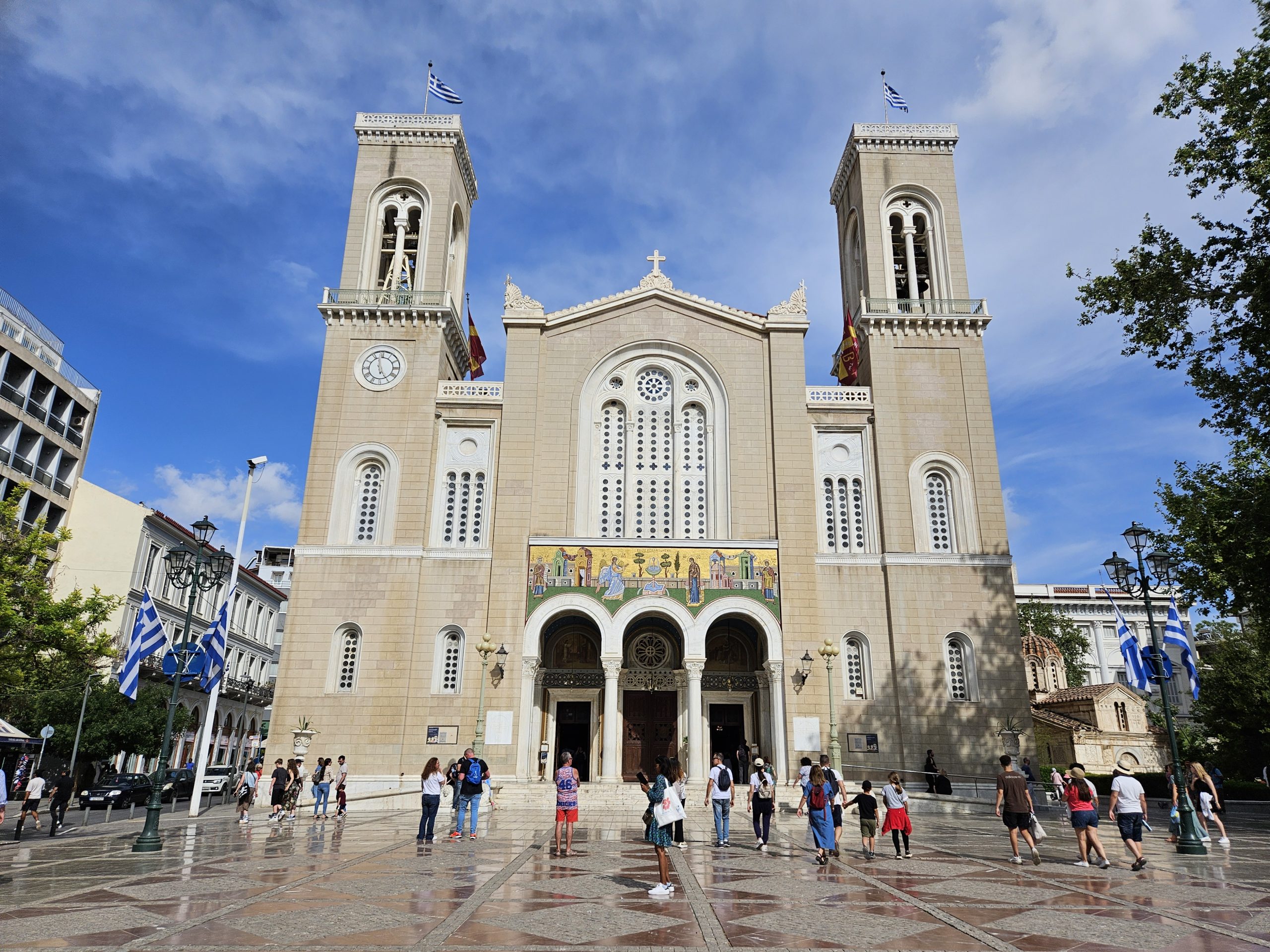
After Greece gained its independence from the Ottoman Empire, the construction of the Metropolitan Cathedral of Athens began. At Christmas 1842, with the laying of the foundation stone by King Otto I of Greece and his consort, Duchess Amalia of Oldenburg, the construction of the temple began. The material used for the construction was extracted from old demolitions of seventy-two churches, and the work lasted for two decades. The cathedral was consecrated on May 21, 1862 and dedicated to the Annunciation.
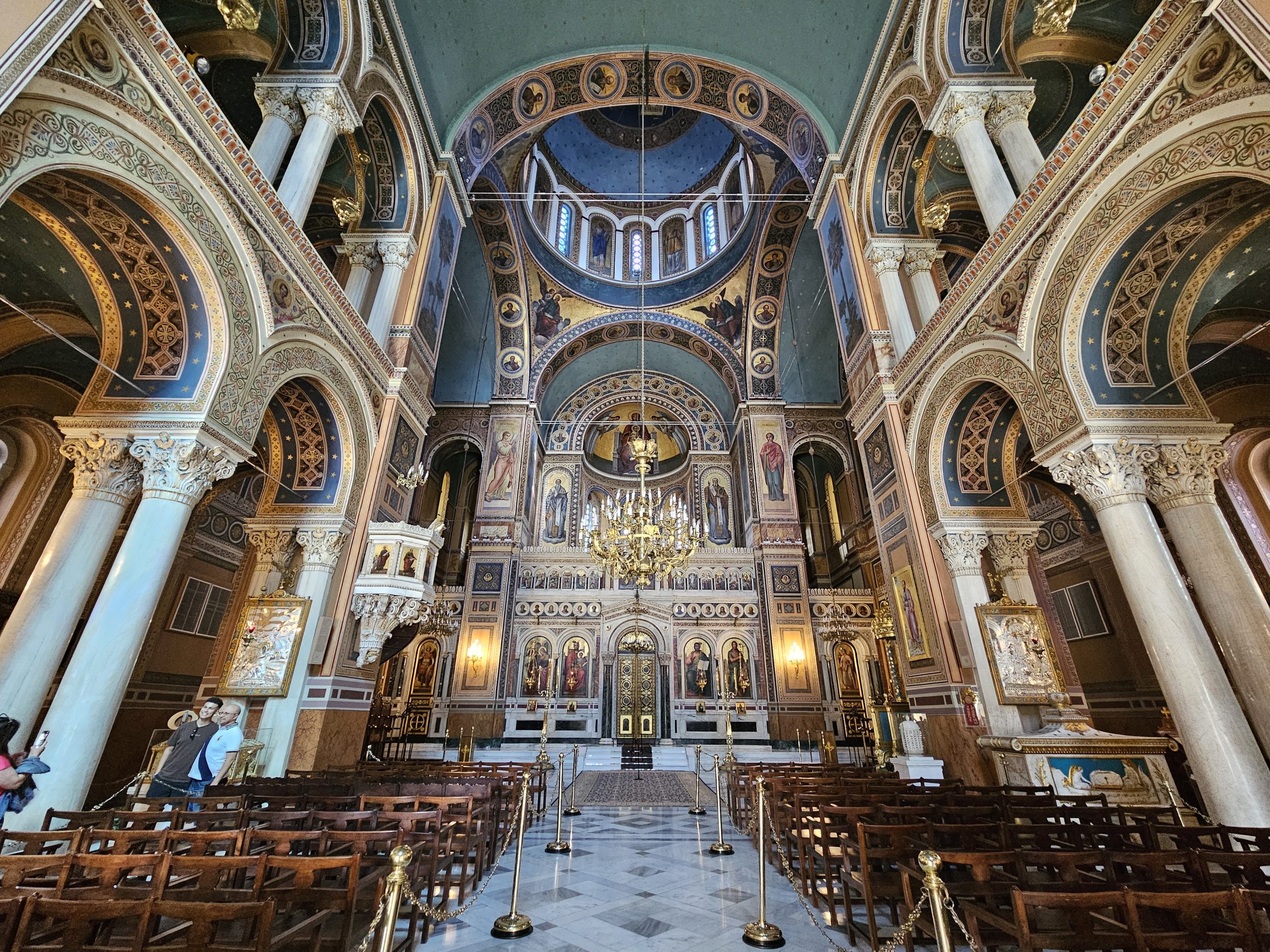
This impressive cathedral is composed of three naves that are separated by double columns under arches, and crowned by a magnificent dome. Inside are the tombs of two martyred saints of the Greek Orthodox Church, who were killed by the Turks during their occupation of Greece: St. Philothea of Athens, patron saint of the city, and the Patriarch of Constantinople, Gregory V.
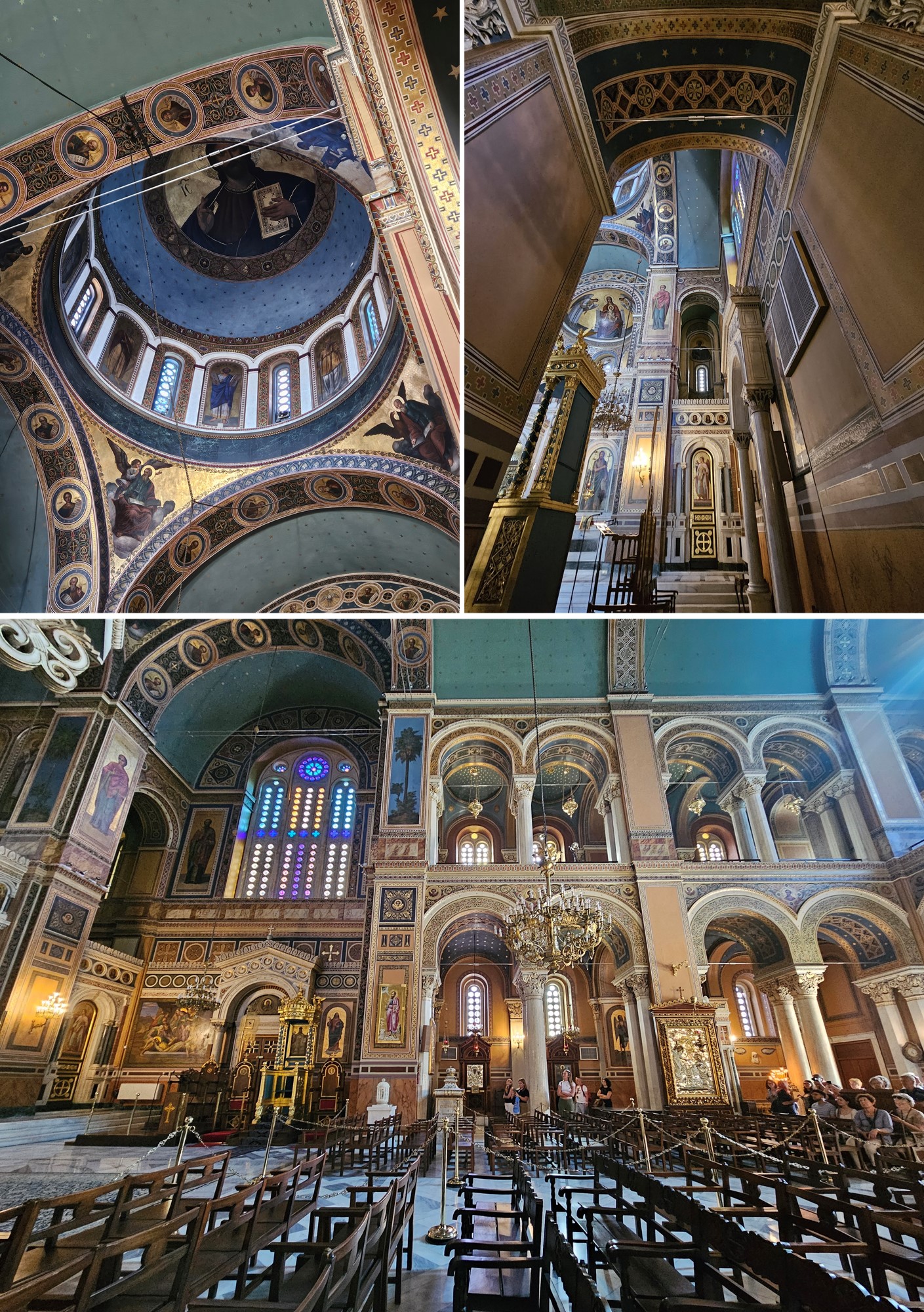
The architecture of the basilica is an interesting amalgam of Romanesque, Renaissance and Byzantine styles. Inside, you can appreciate multiple Byzantine frescoes that, although of modern times, are a real jewel of the cathedral. The interior decoration is richly adorned with icons, highlighting the impressive wall of icons dating from 1825. The bell tower was designed in 1958 by sculptor Giannis Filippotis, in collaboration with architect Anastasios Orlando. After the 1999 Athens earthquake, the church underwent restoration work.
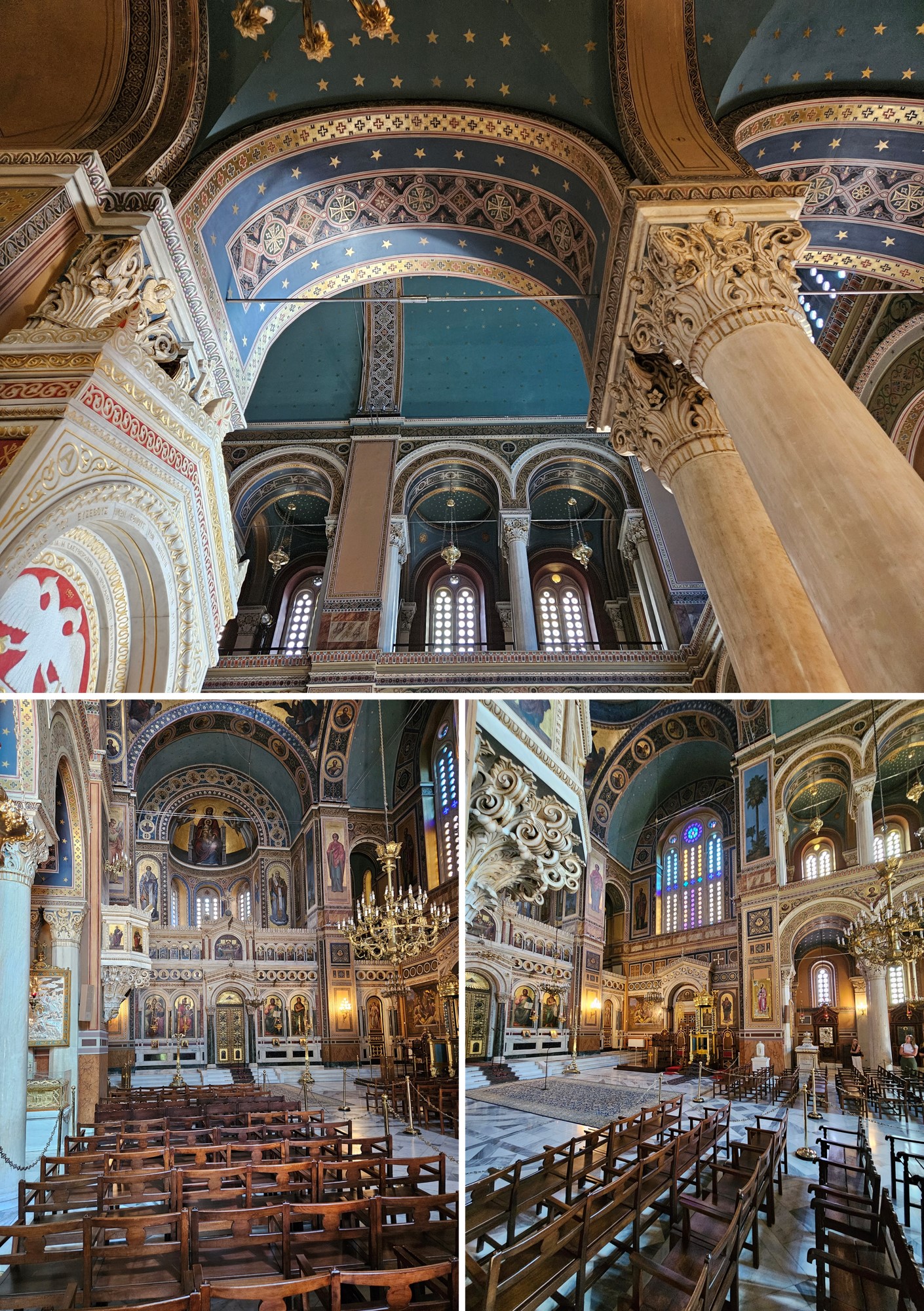
On May 14, 1962, Princess Sophia of Greece was married in the cathedral to the then heir to the Spanish throne, Juan Carlos de Borbon y Borbon. On September 18, 1964, the cathedral witnessed its greatest splendor when it hosted the wedding of the then King Constantine II of Greece to the Danish Princess Anna Maria, an event attended by representatives of royal houses from all over Europe and the Arab world. This was the only wedding of a King of Greece celebrated in the Cathedral.
The Church of the Little Metropolis
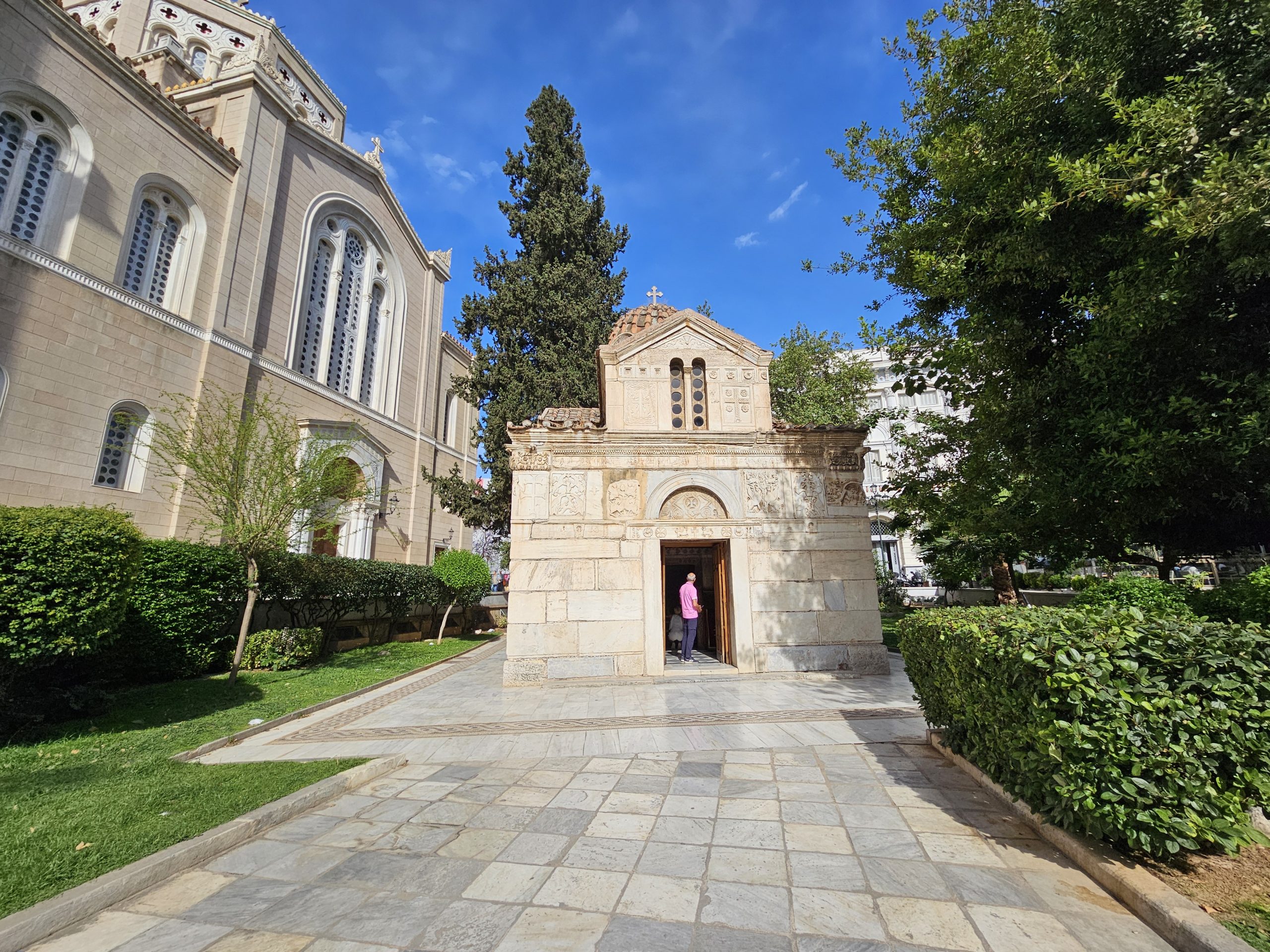
Adjacent to the great cathedral is the Church of the Small Metropolis, also known as the Church of Agios Eleftherios. With dimensions of only seven by eleven meters, it is one of the smallest churches in Athens, but at the same time, it is considered one of the oldest and most beautiful. The building was erected on the ruins of an ancient temple dedicated to the goddess Eileithyia in the 12th century. Originally, it was mainly used for the intercessions of pregnant women and, before the construction of the Great Metropolis, it was the seat of a bishop.
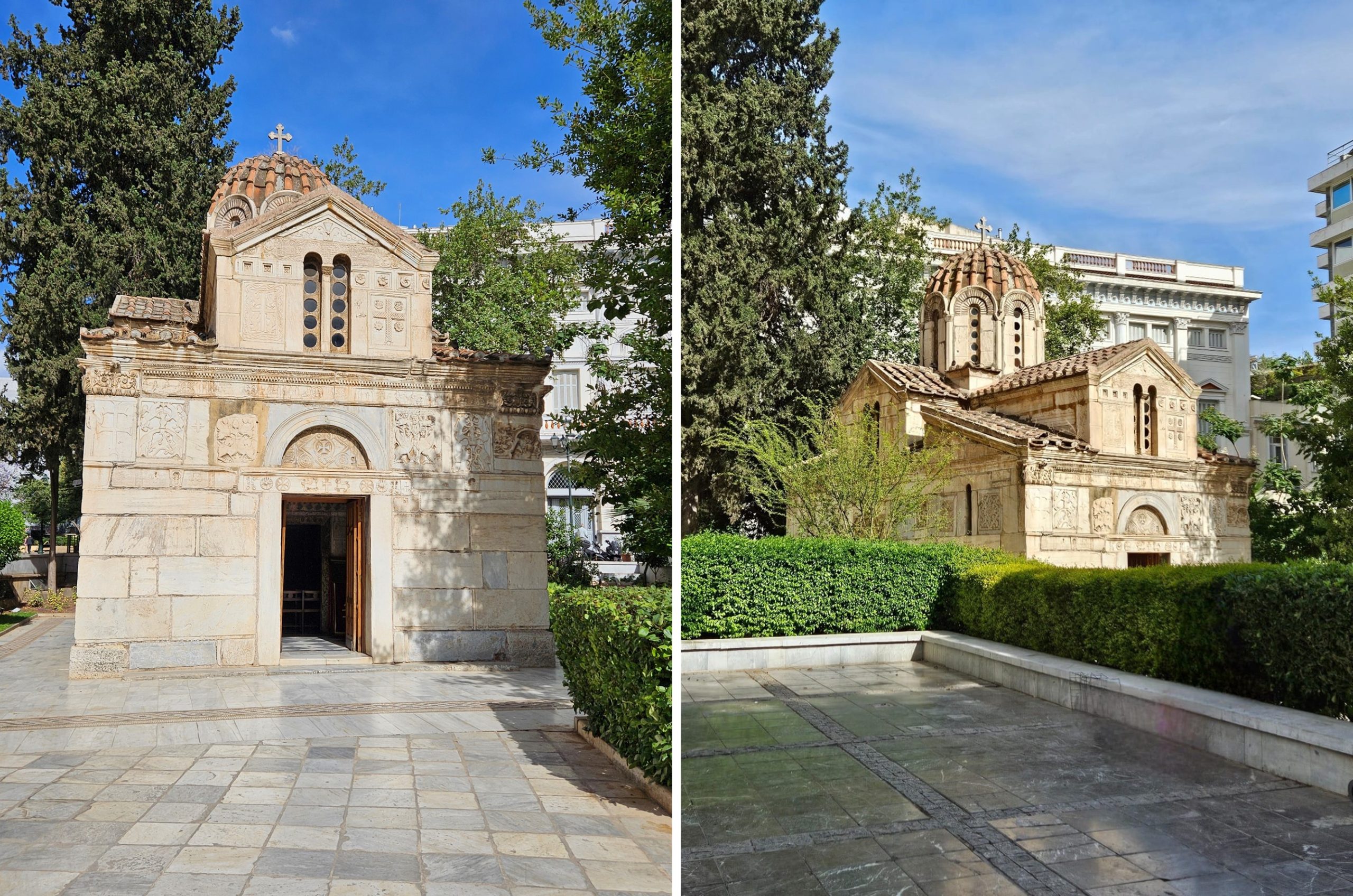
The church exhibits a typical Byzantine layout, with a square cross plan and three aisles, the central one being noticeably higher than the side ones. The octagonal dome, which was originally supported by four columns, was replaced in the 19th century by pillars. It is a small structure, only 7.6 meters (25 feet) long and 12.2 meters (40 feet) wide.
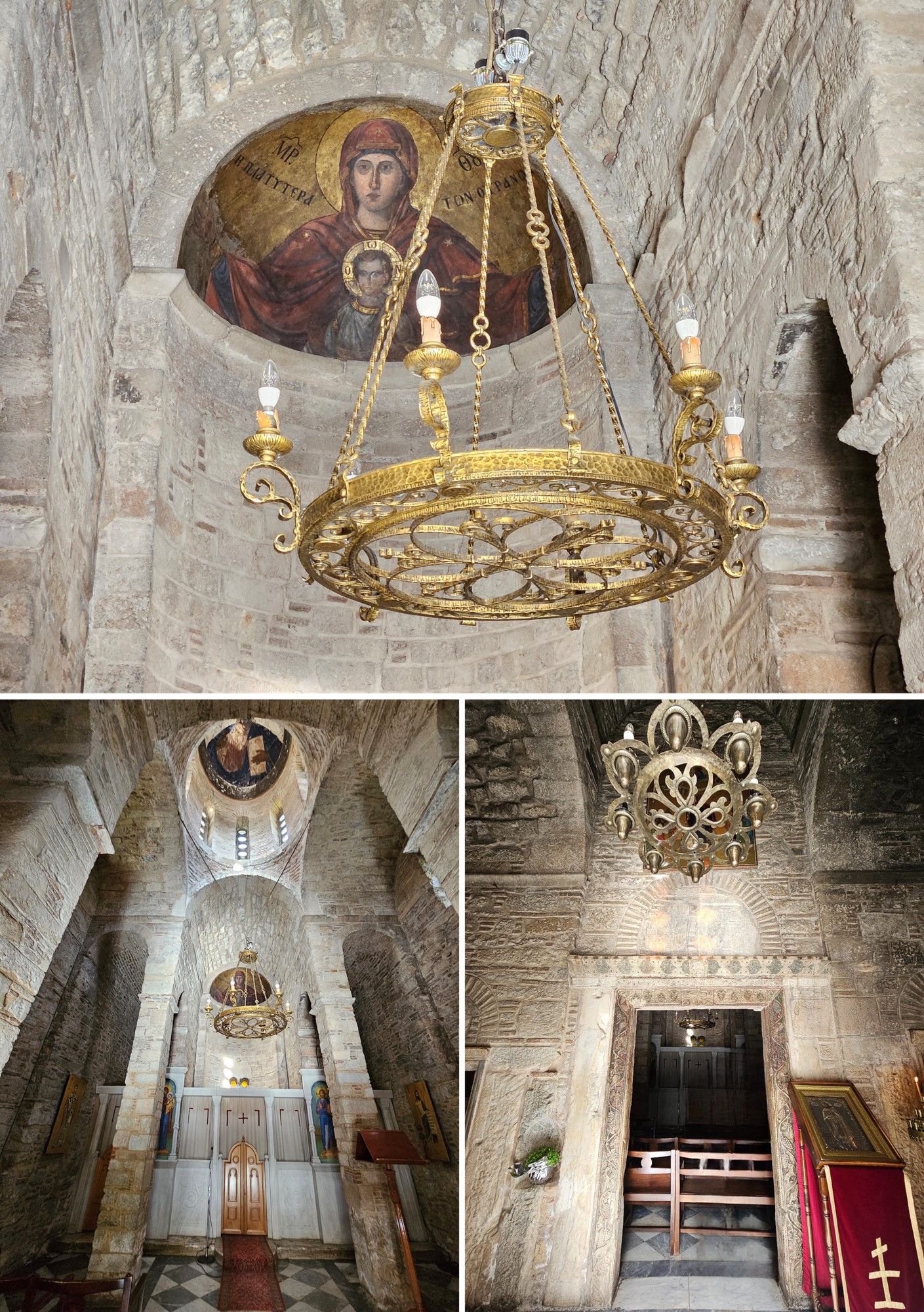
The walls of the church are built exclusively with *spolia of reused marble, presenting undecorated masonry up to the height of the windows and adorned with a total of ninety sculptures on top; this feature makes it unique among Byzantine sacred architecture. Unlike what is usual in contemporary Byzantine architecture, no bricks were used here, except for the dome. The interior of the church was originally decorated entirely with frescoes, although only one remains today: an image of the Panagia above the entrance apse.
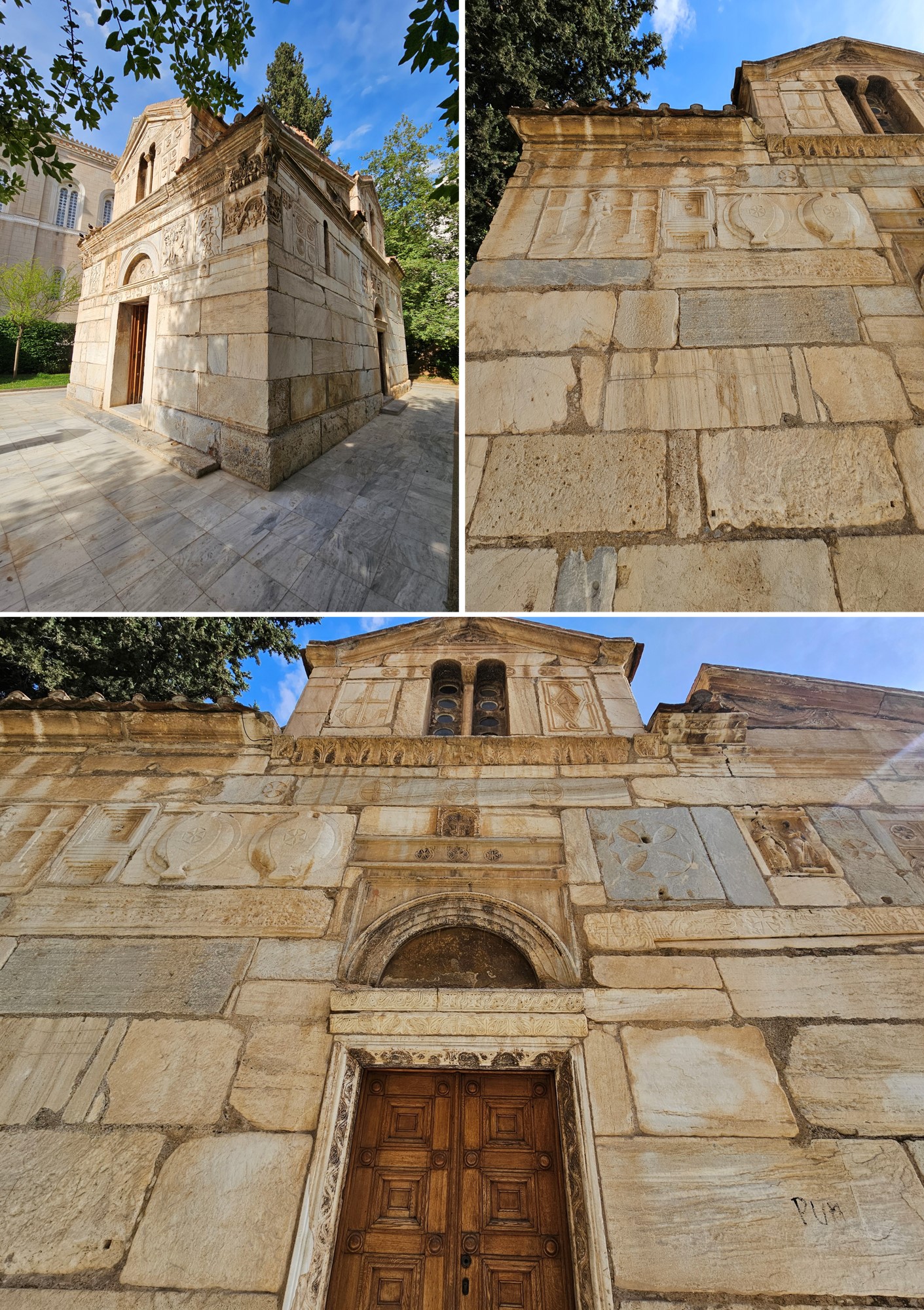
After the Greek War of Independence, the church fell into disuse. From 1841 to 1863, it housed the public library of Athens; later, it was reopened as a church, first dedicated to Christ the Savior and then to St. Eleutherius. In 1856, a restoration was carried out that returned the church to its original state, removing more recent additions, such as the bell tower.
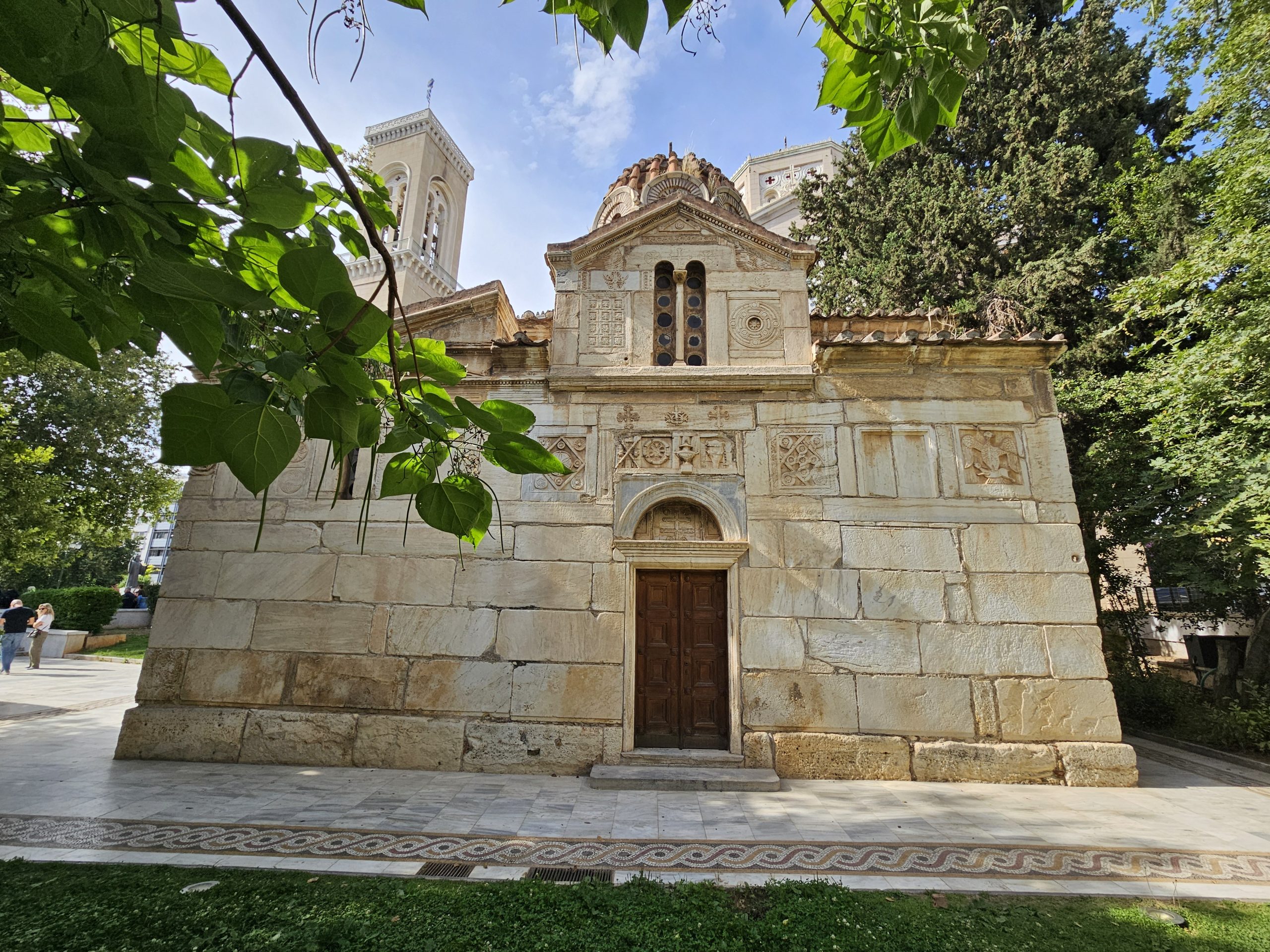
On January 16, 2023, the Little Metropolis was the scene of the wake of Constantine II of Greece, the last king of the Hellenes, where thousands of people prostrated themselves and wept at his memory.
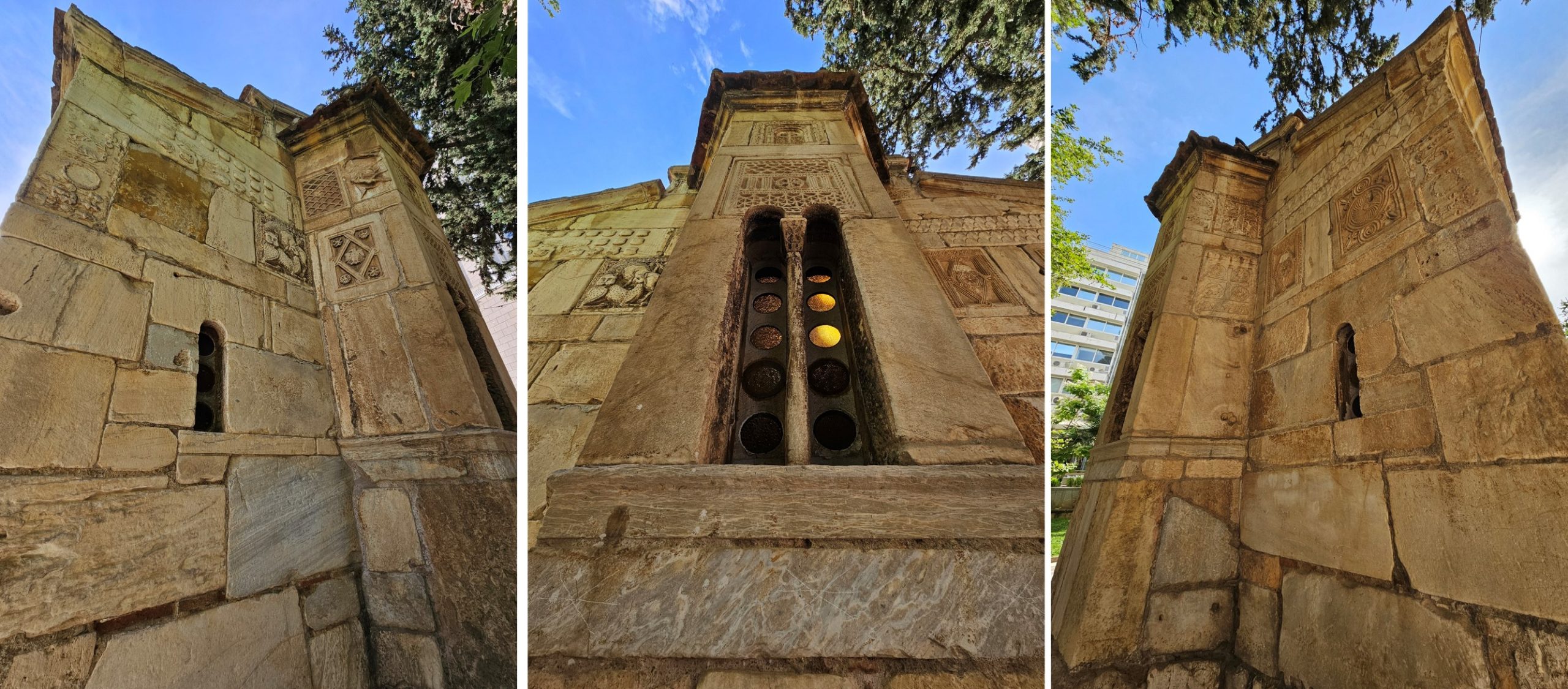
***Spolia, a word derived from the Latin for “spoils” or “plunder,” consists of reusing artistic and architectural elements from earlier buildings or demolished structures.
| Resources:
– https://www.turismoengrecia.com/catedral-de-atenas – https://es.wikipedia.org/wiki/Catedral_de_la_Anunciaci%C3%B3n_de_Santa_Mar%C3%ADa_(Athens) – https://athens-tourist-information.com/es/cosas-que-hacer/iglesias/catedral-de-la-anunciacion – https://www.hola.com/viajes/20240927720882/atenas-que-hacer-ver-comer-barrio-plaka/ – https://www.atlasobscura.com/places/little-metropolis-church |

